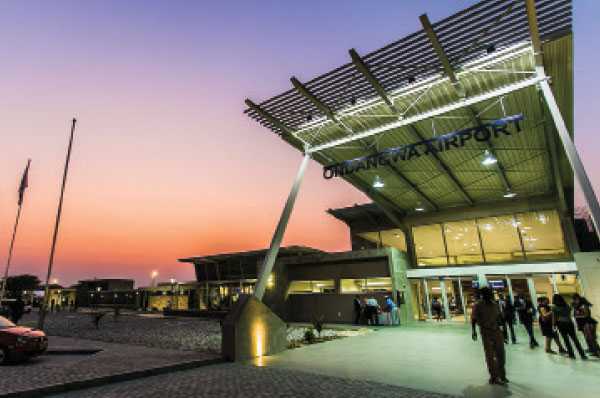Namibia aims to become Africa’s logistics hub
In its bid to become the logistics hub of Africa, Namibia Airports Company has opened a new terminal building in Ondangwa located in northern Namibia along the border with Angola. This comes hot on the heels of the opening of Ruacana- Omakange Road. Most of Namibia’s airports were owned by the military.
They are now being refurbished so that they can attract more traffic - both cargo and passenger airlines - for commercial purpose. The inauguration of the new terminal building in Ondangwa also marked the groundbreaking ceremony of a new runway. The terminal building also boasts a high-end security technology. The airport terminal was designed to mirror the culture and way of life of the Namibians. Namibia Airports Company currently operates eight airports. The country has identified its ‘comparative advantage’ in the transport sector owing largely to its “Strategic positioning within SADC region,” as attested to by Namibia’s National Development Plan 4. The plan recognizes that economic developments in many SADC countries are expected to take off rapidly, hence the need to position Namibia as a logistics hub.
The export of mineral resources such as copper and coal and the importation of chemicals for mining have started in a number of neighbouring countries. During the inauguration of the terminal building, President Dr Hage Geingob stated that he recently met with the presidents of both Angola and South Africa. “When I spoke with my counterparts President Dos Santos and President Zuma, one of the key topics of discussion was the need for greater economic cooperation regarding investment and trade.” He said that the discussion also touched on how best to take advantage of “Our transport corridors such as the Angola- Namibia- South Africa (ANSA) Corridor,” in order to accelerate industrialisation and bring economic development to the contracting countries. The Namibian government is seized with the task of transforming Namibia airports with Walvis Bay Airport also under refurbishment and scheduled for completion in February 2016.
Namibia Airports Company CEO, Tamer El-Kallawi said the company is in sound financial position and that they intend to capitalise on this strength and aggressively pursue growth in this sector. “We see this airport terminal as an affirmation of the opportunities and possibilities that exist for our people to exercise their life qualities through travel,” said El- Kallawi. The Airport terminal will have the capacity to process 75 000 passengers per annum with cargo capacity envisaged to reach 2400 tonnes by 2017. The runway once complete will be able to accommodate larger aircraft apart from the national airline’s biggest aircraft but foreign jumbo jets as well.






